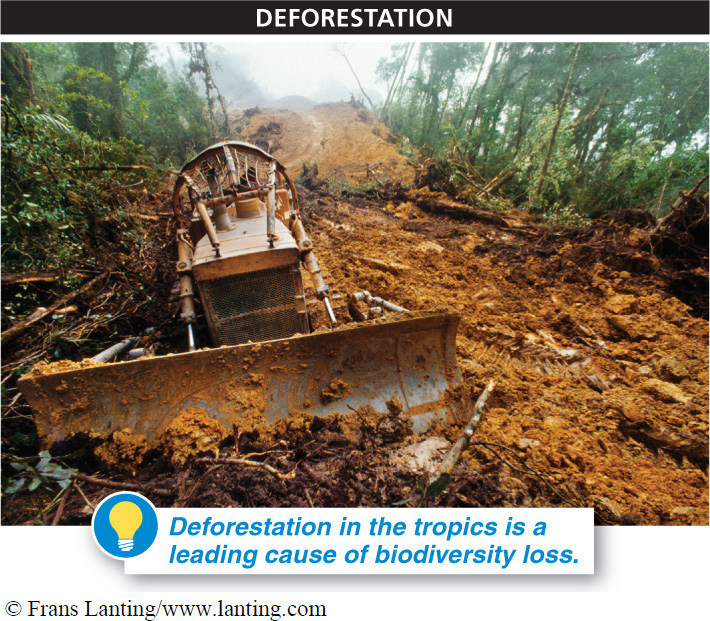Sometimes you can be so close to something that it’s difficult to really see it. That may be the situation that humans are in right now when it comes to the global loss of biodiversity. But we are becoming increasingly aware that we are in the midst of a mass extinction. In a recent survey by the American Museum of Natural History, 70% of biologists indicated that they believed this is true and that steps must be taken by governments and individuals to stop this massive loss of species.
If mass extinctions are a natural part of earth’s history, should we be concerned about our effects on extinction rates?
Data on current rates of extinction in every well-
661
Historically, evidence from the fossil record suggests that background extinction rates are about one extinction per million species per year. Currently, as the numbers above suggest, extinction rates may be 1,000 times (or more) greater than this. It is difficult to know the exact magnitude of the problem because, as we saw in Chapter 10, biologists don’t have much of an idea about how many species there are on earth—
Unlike the last mass extinction event, in which the dinosaurs and most other species were wiped out in the wake of an asteroid’s collision with earth, this current mass extinction seems to be the result of the activity of one species—
The chief reason for the loss and impending loss of so many species is habitat loss and habitat degradation. Particularly harmful is habitat loss in earth’s tropical rain forests, where biodiversity is greatest. In the past 25 years, half of the world’s tropical rain forests have been destroyed, usually by burning to make way for agricultural use of the land or by logging (FIGURE 16-12). Urban development, too, is responsible for destruction of rain forests, as the growing human populations continue to expand. Intensive agriculture, livestock grazing, and the development of urban centers have led to the destruction and fragmentation of habitats worldwide.

The loss of biodiversity-

Additionally, the introduction of exotic species into habitats where they would not naturally be found is also having a significantly adverse effect on biodiversity. We explore this in Section 16-
Later in this chapter, we discuss the strategies by which the current high rate of biodiversity loss can be reduced.
TAKE-HOME MESSAGE 16.6
Most biologists believe that we are currently in the midst of a mass extinction, that it is the result of human activities, and that it poses a serious threat to the future survival of humans.
Biologists believe we are in the midst of a mass extinction. How is this supported in terms of historical background extinction rates and the current extinction rates?
Historical evidence from the fossil record indicates that background extinction rates are about one extinction per million species per year. Current extinction rates may be 1,000 times (or more) greater than this.
662